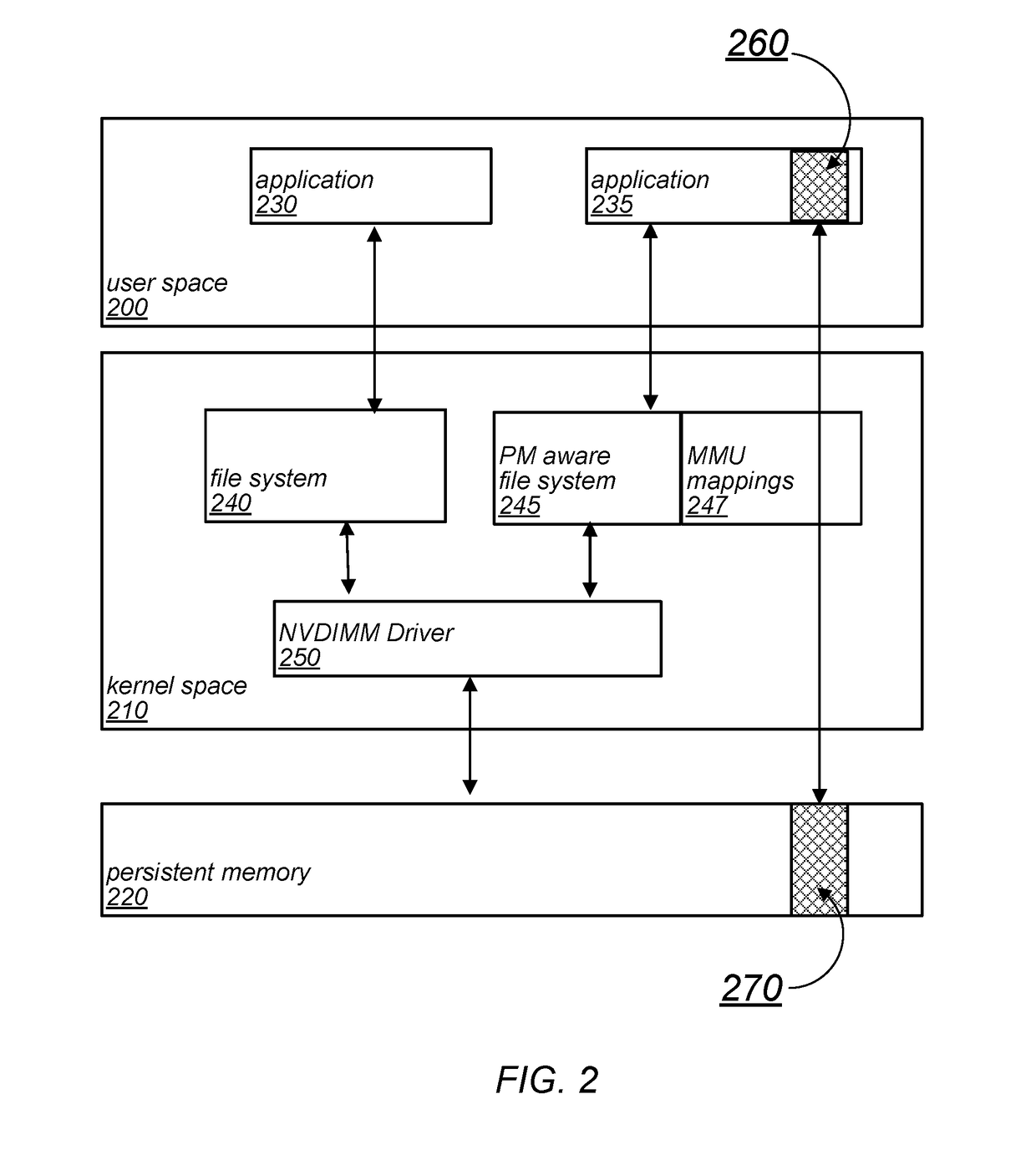Data Structure Store in Persistent Memory
a data structure and persistent memory technology, applied in memory architecture accessing/allocation, instruments, computing, etc., can solve the problems of long time-consuming and laborious heating up of dram cache, and incur amortized constant time lookup overhead for hash tables
- Summary
- Abstract
- Description
- Claims
- Application Information
AI Technical Summary
Benefits of technology
Problems solved by technology
Method used
Image
Examples
Embodiment Construction
Introduction
[0022]Data stores, such as key-value stores with simple GET / PUT based interfaces, have become an integral part of modern data center infrastructures. However, many of these works present the data store as a volatile cache for a backend database. Even if the data store persistent, systems are traditionally designed to utilize slow, block-based storage mediums and marshal updates, such as via a file system interface, into a different data representation (e.g., block-based representation). In many cases, warming up the DRAM cache can take up a long time (e.g., several hours) in workloads with large data sets.
[0023]At the same time, byte-addressable persistent (e.g., non-volatile) memory technologies, such as spin-transfer torque MRAM (STT-MRAM), memristors, are becoming more available, as evidenced for example by Intel and Micron Technologies' recent announcement of their 3D XPoint persistent memory. These technologies may offer the persistence of traditional storage media ...
PUM
 Login to View More
Login to View More Abstract
Description
Claims
Application Information
 Login to View More
Login to View More - R&D
- Intellectual Property
- Life Sciences
- Materials
- Tech Scout
- Unparalleled Data Quality
- Higher Quality Content
- 60% Fewer Hallucinations
Browse by: Latest US Patents, China's latest patents, Technical Efficacy Thesaurus, Application Domain, Technology Topic, Popular Technical Reports.
© 2025 PatSnap. All rights reserved.Legal|Privacy policy|Modern Slavery Act Transparency Statement|Sitemap|About US| Contact US: help@patsnap.com



